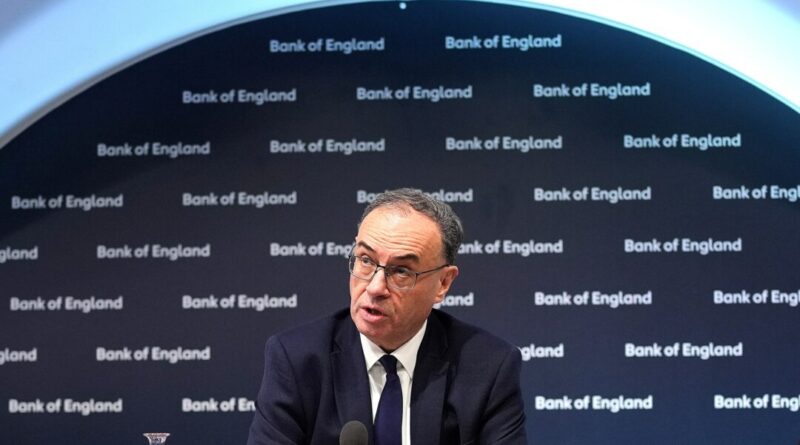Bank of England Cuts Interest Rates to 4.5 Percent as It Downgrades Growth Forecast
The bank voted to reduce the cost of borrowing on Thursday, but slashed its growth forecasts for the UK economy.
UK interest rates have fallen to 4.5 percent after the Bank of England voted to cut borrowing costs, as it also slashed short-term growth forecasts for the economy.
The Bank’s Monetary Policy Committee (MPC) voted for a quarter-point reduction after similar cuts in August and November last year, bringing the base rate to its lowest point since June 2023.
Governor Andrew Bailey said the cut will be “welcome news to many” but that the bank is “monitoring the UK economy and global developments very closely, and taking a gradual and careful approach to reducing rates further.”
The base rate helps dictate how expensive it is to take out a mortgage or a loan, while it also influences the interest rates offered by banks on savings accounts.
The bank halved its growth forecast for the UK economy to 0.75 percent for this year, down from previous estimates of 1.5 percent, before accelerating again in 2026 and 2027.
The downgrade is a blow to Chancellor Rachel Reeves after Labour made growing the economy its key priority.
Reeves said the interest rate cut was “welcome news.”
“However, I am still not satisfied with the growth rate. Our promise in our Plan for Change is to go further and faster to kick-start economic growth to put more money in working people’s pockets,” she added.
It also comes amid signs inflation is rising again, with forecasts pointing to a higher-than-expected peak of 3.7 percent later in the summer.
The bank said the increase to inflation, which measures the rate of price rises across the economy, is mainly down to higher-than-expected energy prices, as well as rising water bills and bus fares.
Inflation is set to only fall back to the bank’s 2 percent target in the final quarter of 2027, it said, about six months later than previously thought.
Despite the cut to near-term growth forecasts, the bank said the economy would grow faster than expected in the longer term, with a growth rate of 1.5 percent for 2026 and 2027, both up 0.25 percentage points compared with the last forecast.
Policymakers also said unemployment is set to rise to a peak of 4.75 percent, up from previous forecasts of 4.5 percent, adding that rising national insurance contributions (NICs) for employers posed “a risk” of more people being out of work.
It comes after several large firms including Sainsbury’s cut jobs in the first weeks of 2025, with the supermarket saying some of the losses were linked to the increase in NICs.
The cut to the base rate was not a unanimous decision, with two of the nine members voting to cut rates even further to 4.25 percent, while the remaining seven voted for a quarter point cut.
The bank said it had not factored the potential effects of U.S. President Donald Trump’s trade tariffs on its forecasts, adding that it “remains unclear what the overall landscape for U.S. and other global tariffs will ultimately look like.”
The rate cut means the average mortgage holder on a tracker deal will see their monthly payments fall by £28.98, according to figures from industry body UK Finance.
The average borrower on a standard variable rate (SVR) will see monthly payments drop by £17.17, assuming the base rate reduction is passed onto them in full. The rate on SVR mortgages is set by individual lenders.





